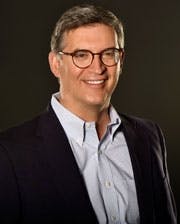Not many leaders today are talking about safety as a strategic lever. And the government does not trust organizations to embrace safety, so they legislate things we should do and audit us for compliance.
I propose that safety should be any CEOs first concern.
Not only is safety the right thing to do, it makes good business sense.
Consider this:
- U.S. employers pay over $50 billion per year in direct workers' compensation costs.
- Each prevented lost-time injury or illness saves $37,500.
- Investors increasingly use workplace safety and health measures to screen underperforming stocks.
- In a recent survey of several hundred top CFOs, 60% reported that each $1 invested in injury prevention returned $2 or more, and over 40% said productivity was the greatest benefit of an effective workplace safety program.
Paul O’Neill knew safety’s importance. Shortly after being appointed Alcoa’s CEO in 1987, he addressed a group of Wall Street analysts in New York. His very first sentence to the street: “I want to talk to you about worker safety.” While the analysts focused on standard questions about inventories and capital ratios, Mr. O’Neill replied, “I’m not certain you heard me. If you want to understand how Alcoa is doing, you need to look at our workplace safety figures.”
Within a year, Alcoa’s profits hit a record high. Upon Mr. O’Neill’s retirement in 2000 to become the treasury secretary, his leadership helped the company’s annual net income surge more than five-fold. Market capitalization was at $27 billion, and Alcoa had become one of the world’s safest companies.
So what does it mean to shareholders, employees and extended stakeholders to be one of the safest companies?
I’ve worked for 39 years with Milliken & Company, and not long ago we faced a burning platform. Low-cost, off-shore competition posed a growing threat. All our domestic competitors decided to either go overseas or go out of business. While Milliken dedicated more to R&D than any company in the textile industry, to survive we had to address fundamental costs and quality structures to survive.
We were working hard on safety, but in a silo. We saw no connection between safety and operations. We were in survival mode.
I led several study missions to Japan to learn about world-class manufacturing, visiting over 40 operations, and in every case, they started with a safety briefing. At one plant, we said, “We are not here to learn about safety, we are here to learn about world-class manufacturing.”
The reply changed Milliken forever.
We Must Start with Safety
The Japanese manager said, “We have to start with safety. It’s how we earn the trust of our people. It allows us to ask them to participate in other improvement activities.”
In recent years, Milliken has more than doubled the S&P 500’s rate of earnings growth, despite lagging behind the index in topline growth. We have proven ideas for achieving this operational excellence that are relevant for any operation. But the success stems largely from the strong foundation in safety that has driven Milliken the last two decades.
Here are some examples:
- Milliken has run at world-class safety rates for over 25 years.
- In 2010, Milliken became the first company to be recognized twice as one of the safest companies in the U.S.
- Milliken runs its operations with zero safety managers on site. Safety is an associate-driven process.
- All eligible Milliken sites are VPP Star-certified, including its corporate headquarters.
We analyzed numbers to validate Paul O’Neill’s claim, and here’s what we found:
- If the typical Fortune 500 company improved its safety rate from the national average to the world-class level Milliken obtained, it could avoid workers' compensation costs of over $50 million per year per company.
- To generate this type of return at current profit levels, the average Fortune 500 Company would require additional sales of over $800 million per year!
What we learned in Japan really connected the dots. Milliken reached the conclusion that world-class safety was not obtainable unless everyone in the organization was engaged. Easy to say, but hard to do. This level of change required significant training and restructuring of roles and responsibilities.
We now believe in “9 Immutable Keys to Safety.” This is a proven methodology necessary for any organization to achieve world-class safety performance:
-
“Follow the Leader” We believe that the tone is set from the top. Every organization has a “chief safety officer.” At Alcoa, Paul O’Neill took on that role, as did our former CEO, Roger Milliken. This moves safety from just another program to an uncompromised value within the organization. While this is a critical component to safety excellence, we often don’t see this level of commitment in the C-Suite in other organizations. The “buck” has to stop somewhere, and with safety, the higher it stops, the better.
-
“Measure, Review, Repeat” We believe the right metrics have to exist at each level in the organization. Most organizations tend to look only at output metrics, but input metrics are more important the deeper you go in the organization. They must be understood and actionable to create the desired behavior. Reviewing these metrics is just as important.
-
“Who’s in Charge Here?” We believe the roles and responsibilities of everyone in the organization must change, creating the proper structure to support the process. Leadership must take an active role in establishing safety as a value. Management is still accountable but now provides resources and acts as a coach. Hourly associates are now leaders. A central steering committee with supporting sub-committees based on risks are populated with everyone at the location. This is about management moving from the front of the room to the back of the room, not leaving the room.
-
“Hear Ye, Hear Ye” We believe safety reporting is critical from two perspectives: 1) how safety is reported from the top of the organization and, 2) how safety is reported up the organization. Today, safety is first on the agenda of every Milliken gathering -- even board meetings. It’s symbolic, but it also sets the tone that safety is a non-compromised value for the organization. As for reporting up the organization, every associate must feel that reporting injuries is non-negotiable. For many organizations the pressure to be “good” can drive zero reporting of injuries. “No news” isn’t always good news.
-
“A La Carte” We believe what to standardize and what to customize is a fine cultural line. If everything is prescribed to a corporate standard, it is more challenging for people to buy-in. If the committees and sub-committees have the authority to customize safety processes to fit their environment, the ownership changes. While total authority cannot be abdicated by leadership, it is necessary to allow room for new ideas for a robust safety process.
-
“Pay Now, Safe Later” Most leaders will invest in preventive measures for machinery, security and much more. We estimate most companies spend only 17.5% of their total safety budget on preventative safety. At Milliken, the preventive safety spend is 80% of the total, but we spend less per incident overall. How? By investing in prevention. Bottom line, the Milliken spend in total is half of the industry average, and the incident rate is one-seventh.
-
“ABCs and 123s” We believe one of the major preventative spends is education. Most organizations tend to put their education dollars on “hard skills”: technical skills around code and compliance. At Milliken, we invest in our associates’ “soft skills,” including “how to run a meeting,” “how to resolve conflict,” and “giving and receiving feedback.” This was not management’s idea. Our associates asked for this type of training.
-
“You’ve Got a Friend” We believe in handling case management as part of the safety process. How well do organizations handle situations where someone is hurt and out of work? The industry average is 13 months. At Milliken, it’s six weeks. The more the company can interact to understand the nature of the associate’s injury, the more support it can give in terms of recovery to assist the associate in returning to the job. The organization must earn the trust of associates and communicate genuine concern in their well-being for case management to be effective.
-
“Fun and Games” We believe safety awareness activities make safety visual and fun! The best activities are ideas of the hourly associates. We have PPE fashion shows, safety recognition events and seat belt audits in the parking lot where every driver is given a “Lifesaver” candy if they’re buckled up. One technician created a cantilever designed to crush a raw carrot to simulate a human finger in a piece of machinery. It was so impactful, the machine is rotated to each plant. We have identified over 200 awareness activities that have been created and practiced by our hourly associates, and we’re not done.
In summary, we believe Paul O’Neill and Roger Milliken had it right….. if you want to know how an organization is doing, start by looking at its safety process. Zero incidents is the only acceptable goal. The only successful approach is to set safety as an uncompromised value, engage the entire workforce and change roles and responsibilities. Only then can you create the desired outcome of a world-class safety organization. Once the safety foundation is set, you can start building your organization’s operational improvements.
Craig Long has spent his 39 year career with Milliken & Company in various executive positions. In 2007, Mr. Long started Performance Solutions by Milliken, an operational consultancy, to assist other organizations with the competitive challenges Milliken successfully dealt with in prior decades. Long’s experience includes engineering, product development, business management, quality, recruiting, corporate education and complexity reduction. For the past two decades Mr. Long has led implementations in high performance operating systems within Milliken and in 350 client operations in 23 countries. To learn more, visit www.performancesolutionbymilliken.com.





